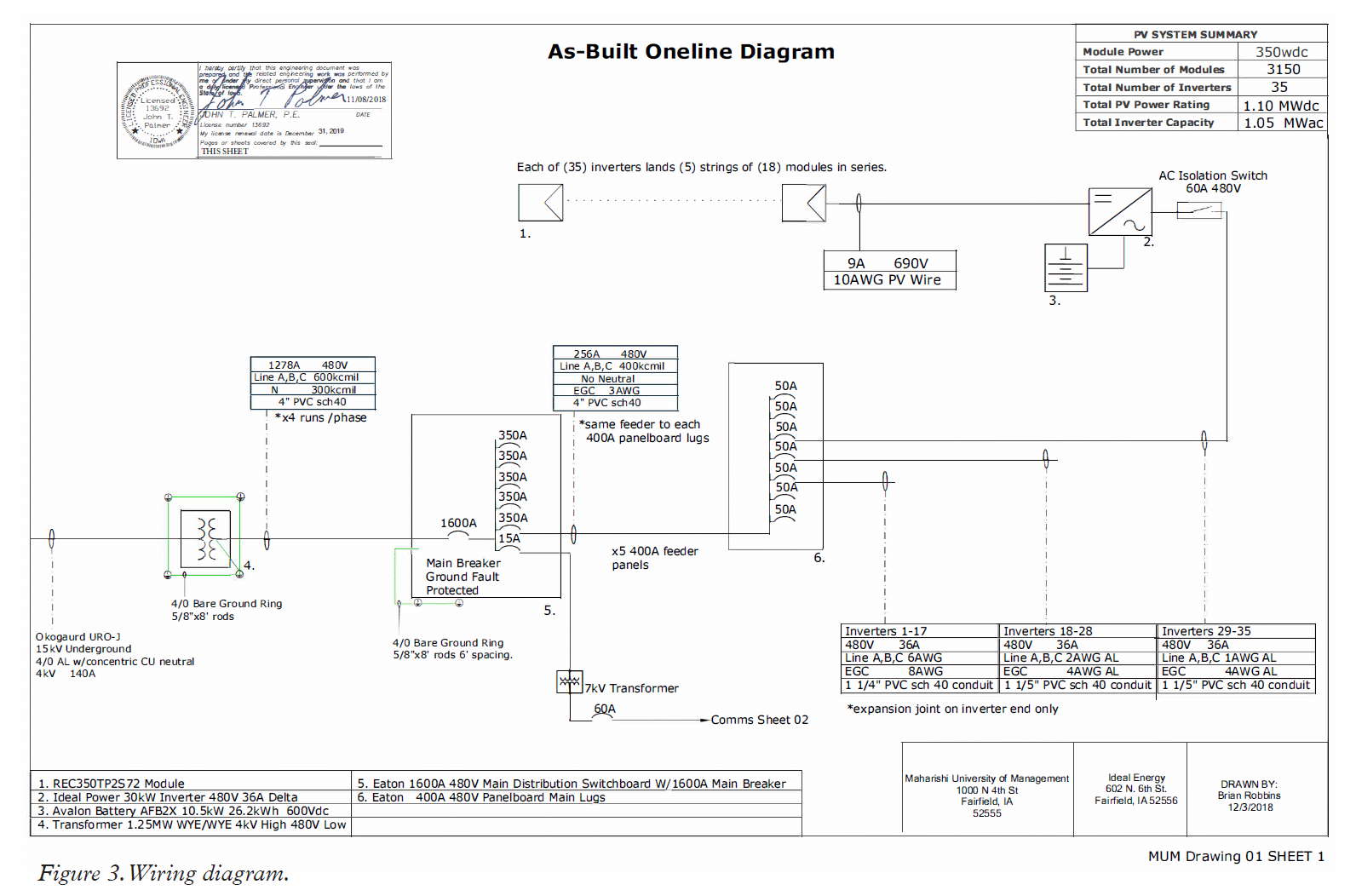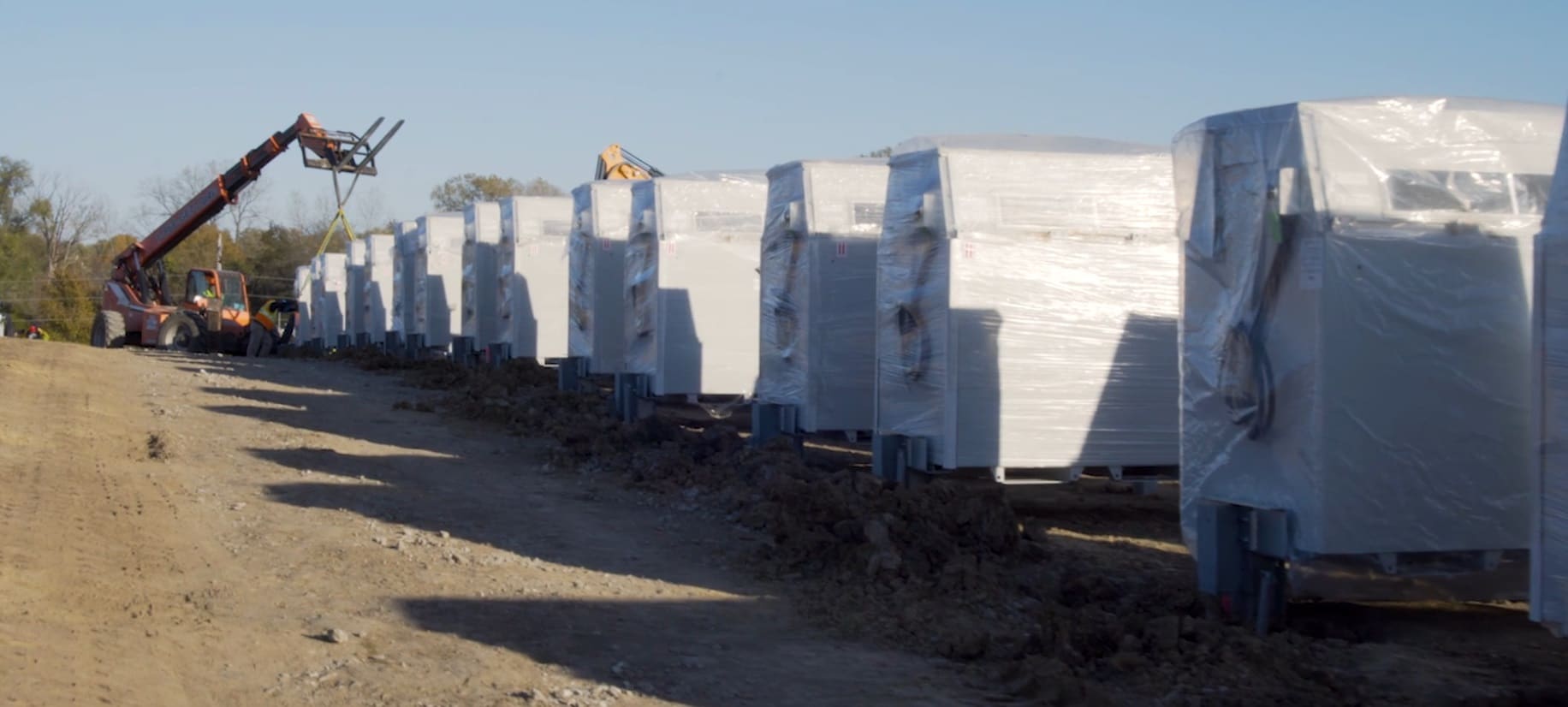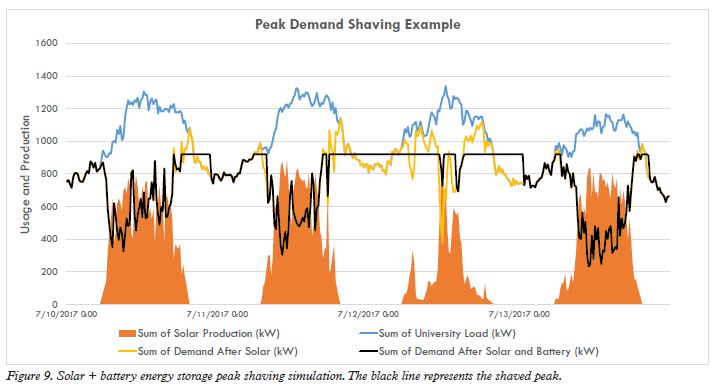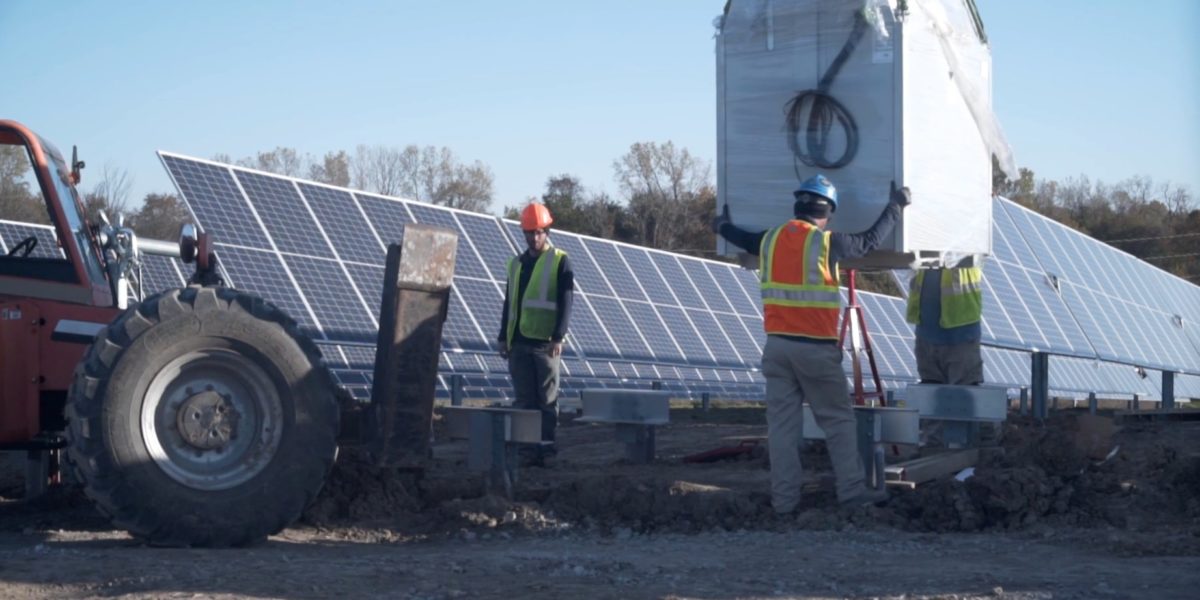Flow batteries have a few key advantages over lithium ion technology. The most important may be that they don’t degrade, and some are projecting that the path toward financially viable energy storage must go through flow batteries.
Ideal Energy has installed a 1.1 MWdc solar power plant for the Maharishi University of Management in Iowa. The system brings the university’s renewable energy energy share to 43%, including a 12.5 kW roof mount solar system, another 42 kW ground mounted PV plant and a 10 kW wind turbine.
The new solar facility includes NEXTracker’s largest DC connected vanadium flow battery installed to date. The plant has its own website, and a really nice pdf download showing off the details.

The five-acre system is powered by 3,150 REC Twinpeak 2S 350W solar modules (pdf) – part number REC350TP2S72, totaling 1.05 kWac / 1.1 kWdc. The 35 inverters are manufactured by Ideal Power, which provided its Stabiliti 30C3 (pdf) bidirectional inverter, which allows the energy storage to charge from either the grid, or the on-site solar. NEXTracker supplied its NX Horizon, single-axis trackers, and the flow battery, model Avalon AFB 2.10, is manufactured by Avalon Battery.
The solar field is composed of 35 unique rows of 90 solar modules, one inverter and one flow battery. The site’s topography necessitated a two part layout – one with a “standard” slope of up to 5%, and a “high” slope section between 6% and 15%.

The system was designed for peak shaving, bringing the summer kW peak from the 1400 to 1600 kW range, to closer to the winter peaks between 750 to 950 kW. The system has a very low DC:AC ratio, approaching a 1:1 value, because the facility is not allowed to export excess electricity per the interconnection agreement. Ideal Energy noted that getting rid of the export means the interconnection application was faster and cheaper. The system is expected to curtail 4-8% of the electricity generated on an annual basis.

NexTracker’s single-axis tracking arrays allow for a greater optimization of electricity production due to its ability to adjust based upon site specific needs. In a site that is focused on lowering demand charges, the “wide shoulders” of a single axis tracking system allow solar-only production earlier and later than fixed-tilt mounting, lowering the need for energy storage in those windows.
And while this is the largest flow battery to accompany a NEXTracker system to date, it isn’t the largest flow battery in the USA, with at least two 2 MW / 8 MWh systems being installed – one in San Diego, and one in Washington.
Check out Ideal Energy project’s video:
This content is protected by copyright and may not be reused. If you want to cooperate with us and would like to reuse some of our content, please contact: editors@pv-magazine.com.








I’m invested in BMN Bushveld Minerals vanadium and see flow batteries playing a major role in the planet’s future and the environment. It’s slowly being given more headlines about the advantages. There’s so much information on the Bushveld perspective from very good researchers invested
Says a lot when the CEO of SolarPower Europe becomes head of Eurogas – both the largest industry organisations in their respective fields.
He is going to Eurogas with a clear vision: Power-to-Gas. This is how solar is really going to take off.